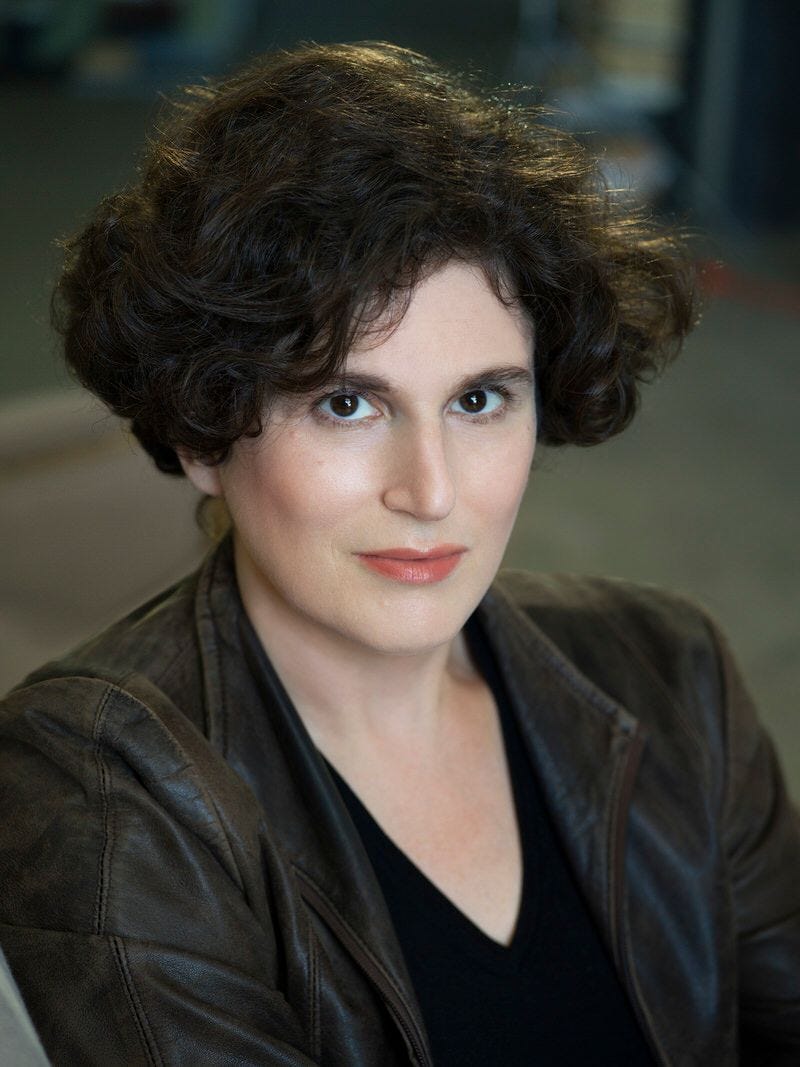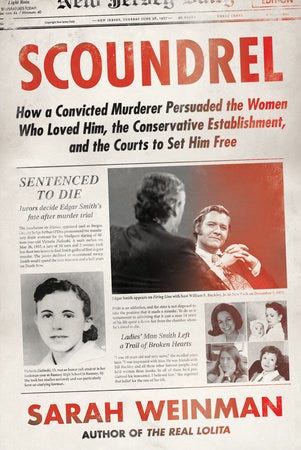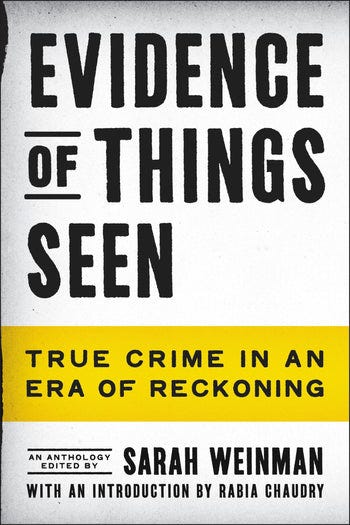I was lucky enough to chat with true crime and mystery critic Sarah Weinman at the National Book Festival, after her panel discussion with Rebecca Makai and Angie Kim.
Sarah, who writes
newsletter, and has published two exceptional works of narrative non-fiction, The Real Lolita and Scoundrel. She’s also edited Unspeakable Acts and Evidence of Things Seen, true crime anthologies that push the historical boundaries of the genre. And, her monthly New York Times roundup of new crime and mystery novels has helped me find many great books.I could have talked with Sarah all day, but she had a packed schedule at the festival. Our conversation has been edited and condensed for clarity.
You’ve reported and published two fascinating non-fiction books. How do you determine if a story can support a full-length book?
I’ve only published two non-fiction books to date and I’m working on my third one. For each of those, it’s been a little different. The Real Lolita grew out of a magazine piece for Hazlitt. I realized I wasn’t done with the subject. I didn’t have all my questions answered yet, certainly not with respect to the relationship between the novel Lolita and the real-life trauma and pain of this girl whose life was cut tragically short. There were still people I hadn’t talked to and I thought “there’s more to be done here”.
With Scoundrel, it also started its life as a magazine piece, but I realized pretty quickly in the initial reporting this was a much bigger story than a magazine piece could contain. Especially when I discovered this archive at Columbia University that belonged to one of the characters, Sophie Wilkins [editor’s note: Sophie Wilkins was a book editor who published serial predator Edgar Smith’s memoir.], I started going through them and I saw what was there wasn’t anodyne correspondence between a writer and editor, but really spicy stuff. It was February 2016 and I was trying not to scream in the rare books and manuscript library. With those letters, Sophie became a fascinating and relatable figure, who’s the emotional heart of that book. She created this emotional, intellectual triangle between her, Edgar Smith, the murderer and William F. Buckley, the conservative pundit.
This new book I’m working on is about a criminal trial in the late ’70s. It was the first time a woman who was still living with her husband charged him with a rape. It’s taking me in a different direction, where of course it’s a true crime story but the questions I’m trying to ask are more encompassing. It’s about gender, power and the rights we think we have. It feels timely even though it’s a story from 45 years ago.
Earlier today, you were in conversation with Rebecca Makkai about this boom of novels and other fictional properties that center “true crime.” What do you make of the trend?
Every time there’s something new that happens in the culture, people want to create art or entertainment that builds on it. I like “Only Murders in the Building” — I’m in wait-and-see mode on this season but the first season was perfect because it was made in a vacuum. I think it’s mostly successful in terms of how it interrogates true crime tropes, but now it’s asking some different questions.
I have seen a lot of crime novels that have true crime podcasts as a plot device or a trope, and most of them, especially the ones that have scripts, don’t work because they don’t understand how to create a podcast script. It’s a medium that’s wholly separate from writing a screenplay or a novel. You have to understand the format to reproduce it successfully. I thought Denise Mina’s Conviction and Confidence were successful. It was clear she’d been listening to true crime podcasts.
Rebecca Makkai’s I Have Some Questions for You did everything I would have wanted. Rebecca is such a smart writer, and she is really thinking about the deeper questions. But, she still wrote a good mystery, played fair and didn’t necessarily arrive at a tidy conclusion.
Your most recent anthology, Evidence of Things Seen, is in conversation with James Baldwin’s The Evidence of Things Not Seen. Tell me a little bit more about that choice.
I read The Evidence of Things Not Seen after Case Cep wrote a piece about it for the New Yorker. I read it and I could see why people didn’t get into it in the ’80s. It just wasn’t where they were at and they were kind of sick of Baldwin because he was, in their minds, being a Cassandra, even though he was just telling the truth over and over again. The truth doesn’t change, whether or not you want to listen to it.
The criticism that Baldwin levels at the Atlanta police in The Evidence of Things Not Seen and his reluctance to approach the parents of the murdered children spoke to me in a way that I think readers in the mid ‘80s wouldn’t have gotten at all. It felt contemporary, even though it had been published almost 40 years ago.
Now, I think we understand that true crime doesn’t follow a tidy narrative and that expecting closure or an ending doesn’t happen in the messiness of real life.
I’ve heard you say before that with changes in communications technology, there’s a shift in true crime trends. Have we had our first TikTok case?
Gabby Petito to be sure. And, to some degree the Idaho murders, but that’s becoming its own cottage industry.
Lastly, any books you want to recommend?
I read so far out in advance for my New York Times column that it’s hard for me to reference something I’m reading now, so instead I will say that what I’m looking forward to reading, because I bought it here today, is G-Man by Beverly Gage, a biography of J. Edgar Hoover. She’s been working on this project for a dozen years. I had been planning on reading it for eons. It was just a question of ‘when am I going to have the headspace to read a 900-odd page book about Hoover,’ but I think as a crime writer it would be negligent if I didn’t read it.
I, too, left Beverly Gage’s presentation thinking I need to prioritize G-Man. Thanks to Sarah for chatting. You can subscribe to her newsletter, follow her on Twitter and Instagram and buy her books.
What to Read If is a free weekly book recommendation newsletter. Need a rec? Want to gush about a book? Reply to this email, leave a comment or find me on Twitter @elizabethheld.
If you’re reading this on Substack or were forwarded this email, and you’d like to subscribe, click the button below.
Disclosure: I am an affiliate of Bookshop.org and I will earn a commission if you click through and make a purchase.








i didn’t know about this baldwin book...
Loved this, Elizabeth. I, too, have a "jury's out" feeling about this season of Only Murders in the Building" and am looking forward to taking my pulse when this season ends.
And here's a novel for what to read if you loved Sarah's book, "The Real Lolita" and/or "Lolita" itself: "Rust and Stardust" by T. Greenwood who gives voice to the girls at the heart of the story.